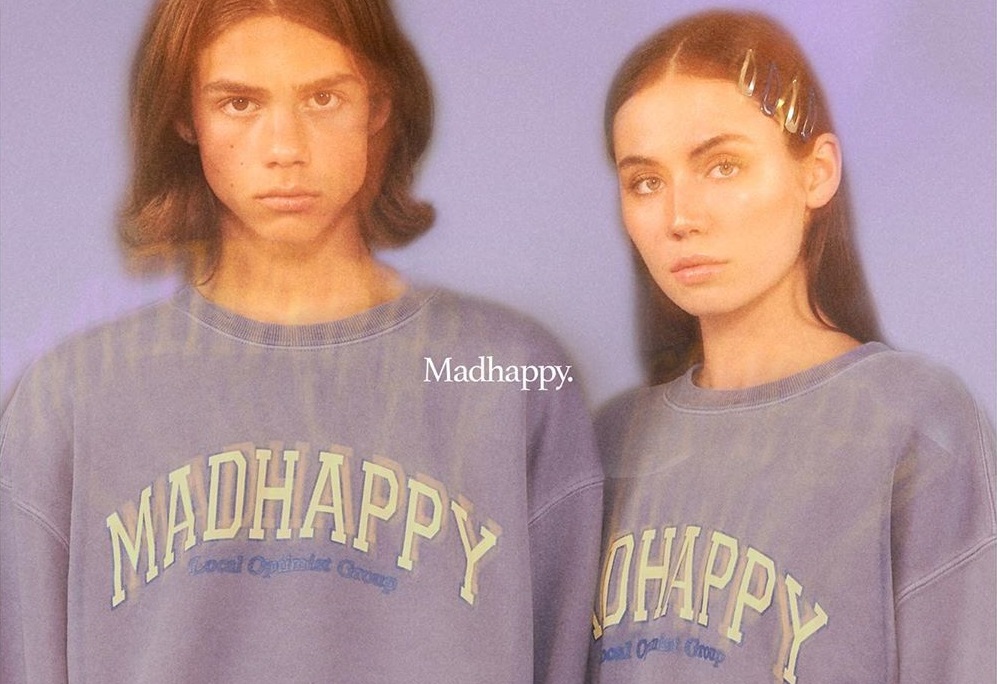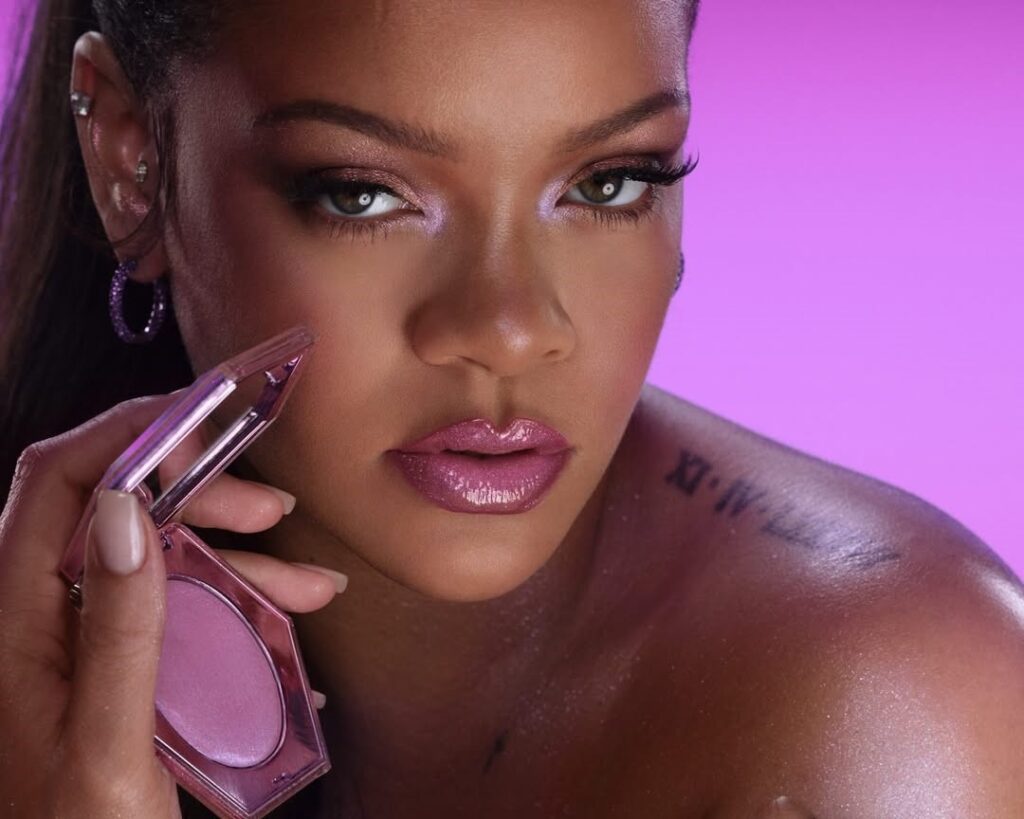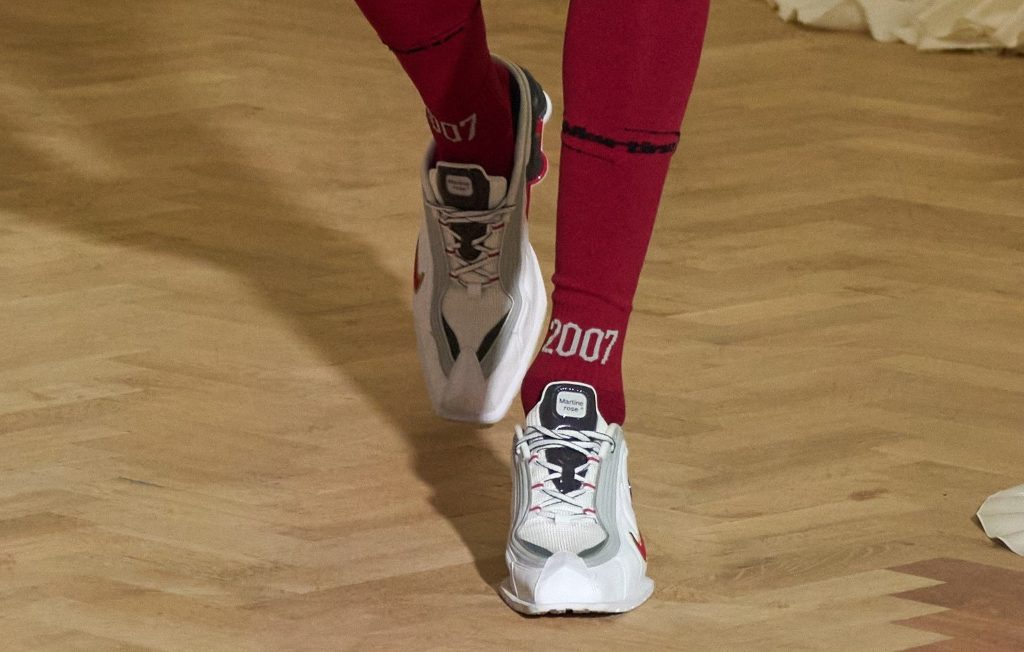Paris-based luxury conglomerate LVMH‘s Moët Hennessy Louis Vuitton has confirmed an investment in MadHappy, a Los Angele label founded in 2017. The investment was made through LVMH Luxury Ventures, a subsidiary known for providing seeding from two-to-10 million euros.
Normally the fund makes investments in rapidly-growing start ups posting $2-$5 million in annual sales though in the case of MadHappy, the two-year-old label is thought to bring in approximately $1 million is sales through its online store, along with a permanent Los Angeles store and various pop-up locations.
While the move has been described as LVMH’s first investment in a streetwear brand, mores so the formula appears to be a well worn one in business whereby the trappings of a disruptive or subversive movement or product are spotted by a well-funded individual or group, which then sanitizes and scales the idea for wider consumption. Think Gucci copying Dapper Dan’s designs or even popular musicians who embrace activist movements as part of their lyrics and marketing efforts.
In the case of MadHappy, it’s clear its founders, Peiman Raf, Noah Raf, Mason Spector and Joshua Sitt, have a connection to the insular and standoffish streetwear scene that’s nebulous at best. A quick search on Hypebeast, known for obsessively tracking noteworthy moments in the culture, shows only four MadHappy-related news stories since the company was founded, one of which is the LVMH investment.
At the same time, streetwear is defined in part by a design ethos that builds in a statement, ranging from subversive and rebellious to simply artful. In the case of MadHappy, one of the founders has proudly stated a wish to create a brand that defangs the category’s edgy roots. In an interview with Covateur, Noah Raf explained, “Every streetwear brand we were seeing had this dark persona, and we wanted to turn that on its head.”
Still, MadHappy is not without a message. In addition to peppy slogans, the brand works with organizations and individuals associated with improving mental health, savvy positioning that reflects an area of interest to the Gen X customer the brand targets.
The things is, lots of people can recognize an emerging trend, but it takes money to build a brand like MadHappy with brick-and-mortar locations in Los Angeles and New York and a marketing budget capable of putting outfits on a top-tier influencer like Gigi Hadid.
And getting access to funding is all about who you know and what circles you run in. Madhappy is actually Noah Raf’s second attempt at launching a brand. Shortly after he graduated high school, he and another partner invested $100,000 of their own money in a premium leather jacket and t-shirt brand that failed to take flight.
Long story short, circumstantial evidence indicates Noah Raf rubs shoulders with people, whether friends or family, who are wealthy enough to take a chance on risky investments.
On that note, LVMH isn’t MadHappy’s first round of investment. In all likelihood, the injection of euros was inspired in part by the brand’s ability to draw initial funding in March 2019 from MeUndies founder Jonathan Shokrian, College Fashionista founder Amy Levin Klein, and Sweetgreen founder Justin Caruso, who’s father is real estate billionaire Rick Caruso.
In addition to financial connections, it’s huge that MadHappy’s founders appear to be white males. According to RateMyInvestor, 90.8 percent of venture capital funding goes to men, while 77.1 percent of funding goes to white recipients. According to the report, “The study shows a staggering amount of selection bias for decision-making in U.S.Venture Capitalists. These investors are largely from the same gender, educational, ethnic, and location background as the founders they choose to invest in.”
In conclusion, it’s easy to see why LVMH invested in MadHappy. The concepts while perhaps not so authentic feel relevant and demographically the team of founders make sense for typical venture capital investors.
Also in conclusion, the logic doesn’t make the move any less frustrating for the authentic architects of the streetwear movement who’ve struggled to make a living from their brands because they lack the capital or connections to bring their platforms to the next level.
That said, there is a growing movement of investors who are seeking to fund minority-owned businesses and founders all within reach of a Google search. The intimidation factor of attempting to do it all on a shoestring budget and also learn the language of the investment world is beyond real but like everything else sometimes all it takes is a willingness to make the first step.






